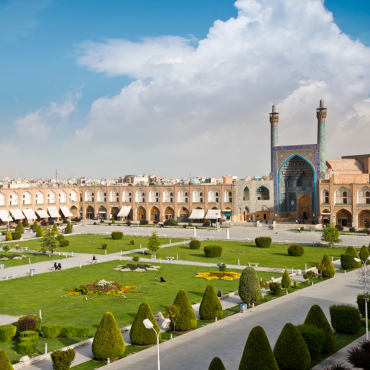Home > Venue > About Isfahan
About Isfahan

Isfahan
Isfahan (Esfahan), located in the foothills of the Zagros Mountains at an altitude of about 1600 meters above sea level, first thrived under the Seljuk dynasty (11th-12th century) and then under the Safavid dynasty (16th-18th century), when it served as the capital of Iran. Its history can be traced to the Achaemenid era; the Shahrestan bridge which spans Zayandeh Rood (the fertile river, the river that gives) dates from the Sasanian era. Isfahan grew in prosperity during the Buyid dynasty (10th and early 11th century). Then Toghril Beg, the first Seljuk king, made Isfahan his capital, and under his grandson Malik-Shah, it grew in size. The Great Mosque (Masjed-e Jame’) was built under the direction of Nizam al-Mulk, the grand vizier of Malik-Shah and the patron of the poet and mathematician Omar Khayyam; but of the original building only a minaret remains.
After the fall of Seljuks, Isfahan lost some of its importance, but regained its preeminence during the reign of the Safavid king, Shah Abbas I, who built many mosques such as the Masjed-e Emam and Masjed-e Sheikh Lotfollah, and the immense Naqsh-e Jahan square surrounded by these two mosques as well as the Ali-Qapu palace.
Now, with a population of 2 million, Isfahan is the third largest city of Iran. With giant steel mills, mines, refineries, textile factories, advanced electronics situated in or around Isfahan, it is one of the most important industrial centers of Iran. Several major institutions of higher education are located in Isfahan, including the Isfahan University (founded in 1950), the Isfahan University of Medical Sciences (also founded in 1950), and the Isfahan University of Technology (founded in 1977).
Isfahan has hot summers and cold winters. The summers are not as hot as those of hot desert climates. The spring in Isfahan, with its heavenly light breezes, is particularly pleasant, and Isfahan’s gardens and Nazhvan Forest create spectacular landscapes during the fall. And with its long history, its historical monuments, turquoise domes, beautiful boulevards, gardens and parks, Isfahan is an important architectural center in the Islamic world and a major tourist attraction. It has been reported that some 450000 foreign nationals visited the city in 2018-2019.
--------